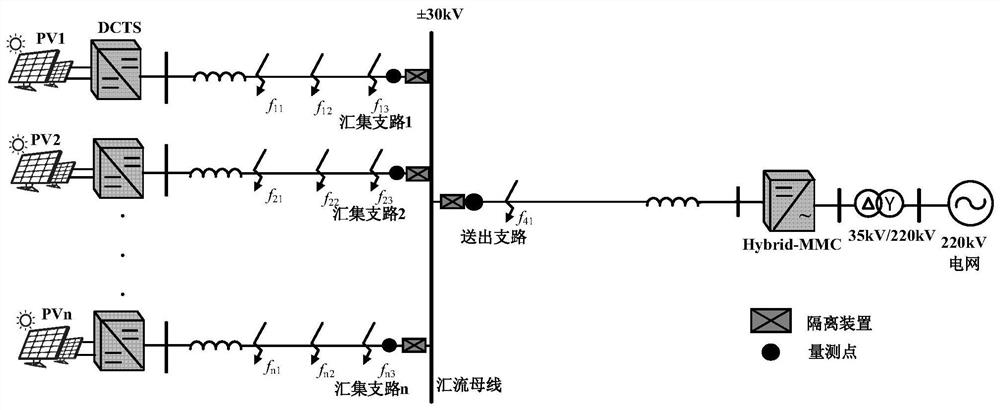A Line Protection Method for Photovoltaic DC Boost Collection System Based on Resonant Current Amplitude Comparison
A DC boosting and line protection technology, applied in photovoltaic power generation, emergency protection circuit devices, electrical components, etc., can solve the problems of low sensitivity to high-impedance faults, large influence of distributed capacitive currents, and limited anti-noise capabilities. Reach the effect of low data storage and transmission requirements
- Summary
- Abstract
- Description
- Claims
- Application Information
AI Technical Summary
Problems solved by technology
Method used
Image
Examples
Embodiment Construction
[0027] The present invention will be described in detail below in conjunction with the accompanying drawings.
[0028] figure 1 Collect system topology diagrams for photovoltaic DC boost, such as figure 1 As shown, after the photovoltaic power generation unit is stepped up by DCT on site, it passes through the collection branch to the collection bus, and then connects to the grid through the sending branch.
[0029] Branch circuit components include converters, current-limiting reactors and DC cables, in which DCT adopts an isolated boost full-bridge conversion structure, and the main topology is composed of BOOST circuits, full-bridge inverters, high-frequency isolation transformers and full-bridge rectifier circuits. Considering the unidirectional transmission power and economic requirements of the photovoltaic power generation unit, the high-voltage side uses a full-bridge uncontrolled device. When the DC line fails, the full-control device of the full-bridge inverter can...
PUM
 Login to View More
Login to View More Abstract
Description
Claims
Application Information
 Login to View More
Login to View More - R&D
- Intellectual Property
- Life Sciences
- Materials
- Tech Scout
- Unparalleled Data Quality
- Higher Quality Content
- 60% Fewer Hallucinations
Browse by: Latest US Patents, China's latest patents, Technical Efficacy Thesaurus, Application Domain, Technology Topic, Popular Technical Reports.
© 2025 PatSnap. All rights reserved.Legal|Privacy policy|Modern Slavery Act Transparency Statement|Sitemap|About US| Contact US: help@patsnap.com



